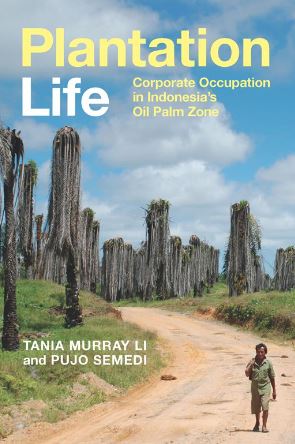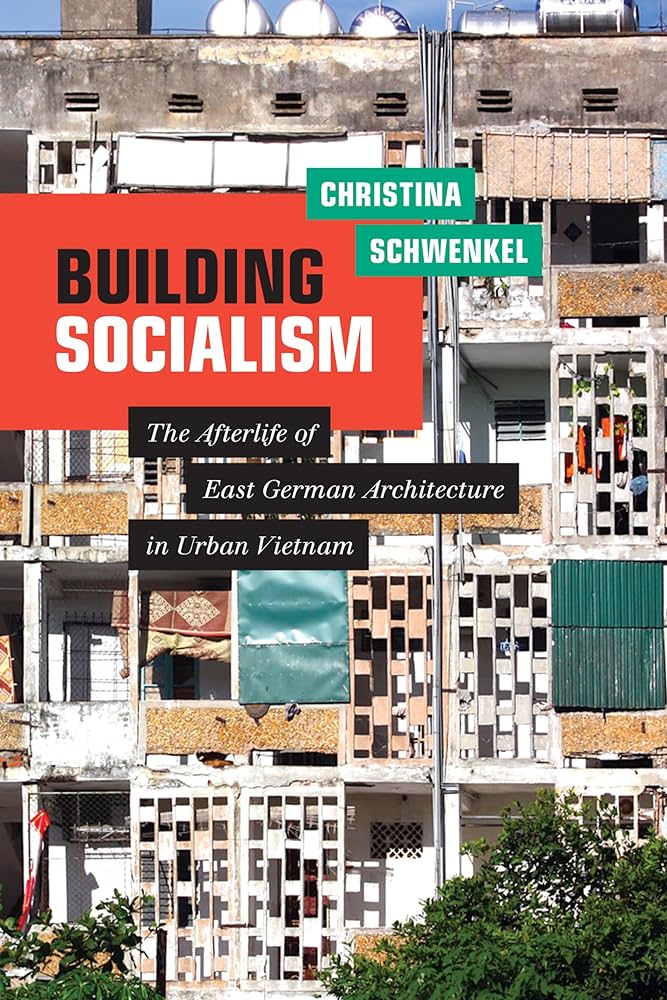Vested interests have been actively reclaiming land from Jakarta Bay for speculative real estate development since the mid-1990s. Widespread institutional reforms and a changing urban political economy have invited greater contestation over these plans. However, one prominent developer’s recent success in developing two islands into upmarket properties highlights the resilience of such interests today, writes Henrico Saeran
_______________________________________________
Several newly established tourist attractions on two artificial islands reclaimed from Jakarta Bay in the extended Pantai Indah Kapuk (PIK) area have quickly become trendy places for Jakartans and non-locals alike. While probably unapparent to its visitors today, the political-economic context behind the development of these islands has been a protracted and disputed affair. This now seemingly uncontentious, yet in fact highly contested, real estate megaproject was the focus of my presentation at the Indonesia Council Open Conference 2023 last September.
Unrelenting development of speculative real estate megaprojects has been transforming the landscape of Jabodetabek (Greater Jakarta) since the late 1980s. The literature has largely attributed the political economy of the Suharto regime and the real estate oligopoly it nurtured for initiating this urban transformation. The Asian financial crisis and subsequent institutional reforms (reformasi) in 1998 did not fundamentally change the spatial order. Analysing a speculative megaproject that has traversed these periods, like that in Jakarta Bay, can provide insight into how these enduring oligopolistic interests have been reorganised amidst increasing contestation over Jabodetabek’s changing urban governance.
Based on preliminary archival and secondary research regarding the Jakarta Bay reclamation megaproject—locally known as reklamasi (literally ‘reclamation’)—I highlight two observations. What has been integral to major property developers effectively navigating the increasing competition and contestation posed by post-reformasi urban governance has been their (i) recycling of accumulation strategies from yesteryear and (ii) strategic alliances or partnerships. While these strategies have likely been necessary, it has afforded them legitimacy from a wider range of stakeholders, which has been key to the real estate oligopoly’s resilience.
Fraught since the beginning
What has been developed in Jakarta Bay today represents just the latest chapter in a protracted and contested saga that began towards the end of Suharto’s presidency. In the years preceding his approval of reklamasi (Presidential Decision No. 52/1995), business conglomerates close to the regime had been acquiring large tracts of land in peri-urban Jabodetabek for speculative real estate megaprojects. Earmarked for new towns and industrial estates, these rampant land grabs led to a shortage of large plots, and ultimately reklamasi’s inception. The special interests which were to benefit from this literal ‘spatial fix’ for further accumulation were Suharto’s children and leading crony, Salim Group founder Liem Sioe Liong.
In terms of design, reklamasi has undergone several iterations. Initially conceptualised as an extension of Jakarta’s coastline totalling 2,700 hectares, it then was revised into an island development comprising 17 islands named A to Q. In the early post-Suharto years, ideas involving rehabilitating Kota Tua, the former Dutch colonial quarter, alongside reklamasi came to the fore. In response to severe flooding in 2007 and 2013, reklamasi then became associated with the ‘Great Garuda’ giant seawall built in the shape of Indonesia’s national mythical eagle. However, with that plan shelved, currently only islands C, D, G, and N have been approved for development. Irrespective of design, the social and ecological toll of the development of the islands has come under heavy scrutiny.
Muted criticism of early reklamasi was perhaps justified as the 1997 financial crisis and Suharto’s resignation the following year made the megaproject unviable. However, developer interest in reclaiming Jakarta Bay reemerged as Indonesia began its recovery from the crisis. Over 2003-2006, jurisdictional disputes persisted, focusing on whether an Environmental Impact Assessment (Amdal)—necessary for development to progress—had been properly carried out. This legal tug-of-war between the developers and a concerned Minister of the Environment, as analysed by Butt and Lindsey (2018, 167-8), eventually saw the Supreme Court controversially rule in the former’s favour. Such contestation was only the beginning.
Contested differently from different sides
Contestation over jurisdiction has been a defining feature of reklamasi’s development. Alongside the introduction of the 2007 Spatial Planning Law, which stipulates more stringent regulations, promotes greater accountability and participatory development, contestation has also come from civil society’s increasing presence. This is the changing urban governance landscape that developers involved in reklamasi must now navigate.
The role of state planners in developing countries with influential private real estate sectors has been an important topic for urban scholars of the Global South. Shatkin (2008), in his early analysis of Manila’s urbanisation, depicted the ‘privatisation of planning’, suggesting a weak state subservient to private developers. However, in more recent work co-authored with Morgan Mouton, he proposed a more nuanced position with the state still playing a prominent role in directing private development, calling it the ‘planning of privatisation’. Jabodetabek is no different. The state sets the parameters of development, but contestation can quickly arise when different state authorities have conflicting goals given that the region traverses multiple administrative boundaries. Furthermore, election cycles can quickly change policy directions. This contested ‘planning of privatisation’ of reklamasi involved two prominent former Jakarta governors, Basuki ‘Ahok’ Tjahaja Purnama and Anies Baswedan.
Ahok, a self-proclaimed technocrat rather than politician, strongly supported reklamasi. He saw it, and property development generally, as a pragmatic way to finance public infrastructure by obtaining compensation for possible violations from the developers. The Great Garuda giant seawall, or formally the National Capital Integrated Coastal Development (NCICD) masterplan, for instance, is a separate yet related megaproject that has been devised by national-level state policymakers with foreign assistance and advice as a solution to perennial flooding which requires substantial funding. Ahok saw reklamasi as a pathway to steer private capital toward financing the NCICD.
Anies, who famously beat Ahok in the 2017 gubernatorial election, campaigned strongly against reklamasi. As governor, he undoubtedly encountered the entrenched interests behind the megaproject. He did cancel the permits for the islands not yet constructed, but as for the privately led islands, C, D, and G under development, he symbolically framed them as public goods. The islands were administratively deemed as pantai (beach) and not pulau (island) and were named Pantai Kita (Our Beach), Pantai Maju (Move Forward Beach), and Pantai Bersama (Together Beach), respectively. In 2019, the Anies administration held an Independence Day ceremony on Pantai Maju to demonstrate the island’s public accessibility.

Civil society has undoubtedly become an important critical voice since the fall of Suharto. Koalisi Selamatkan Teluk Jakarta (Save Jakarta Bay Coalition) has been the main force contesting reklamasi, which involves fisherfolk people directly affected by the megaproject’s development, Jakarta Legal Aid Institute (LBH Jakarta), and Indonesian Forum for Environment (WALHI) to name a few. Their demands to have the already reclaimed islands completely dismantled has not received high-level support. They naturally sided with Anies given his anti-reklamasi campaign but became disappointed with the compromise he crafted with regards to the existing islands.
Persistent private sector
The reklamasi developers’ success in retainingtheir concessions reflects the distribution of power within the current real estate oligopoly. Agung Podomoro Land (APL), the permit holder for island G, and the Agung Sedayu Group (ASG), which is behind islands C and D, are two of Indonesia’s largest real estate developers with extensive portfolios not only in Jabodetabek but nationwide. ASG has even been touted as the leading developer of Indonesia’s new capital Nusantara.
APL’s success in maintaining its permit is an interesting case given that in 2016 it was caught up in a corruption scandal involving bribery of a Jakarta provincial councillor by a high-ranking APL director. The essence of the scandal concerned the influencing of two draft provincial bills relating to reklamasi in favour of the developers. This ‘elite informality’, as Herlambang et al. (2018) have argued, appears characteristic of Indonesia’s real estate industry albeit difficult to research. ASG was indirectly implicated in the scandal, but its efforts in the megaproject have evidently not been derailed.
ASG has been the clear protagonist in reklamasi. Islands C and D, or as it calls them Riverwalk Island and Golf Island rather than the names mandated by former governor Anies, are almost fully developed. Critically, building permits were eventually granted for the development of these two islands despite construction starting before proper regulations were in place. How ASG has effectively navigated this contested urban landscape, it is suggested, is down to its recycling of accumulation strategies which were successful in the past, and its strategic alliances and partnerships, which have afforded it the necessary legitimacy to appease a wide range of stakeholders. The approach ASG has primarily adopted appears to take much inspiration from Ciputra. Meanwhile, ASG’s strategy to widen its support and gain a greater market share has involved partnerships with political elites, prominent business groups, international contractors, and popular brands.
Ciputra was a pioneer of Indonesian real estate for its development of large-scale townships that were sold not just as places to live but also as sites for a cosmopolitan lifestyle. ASG has followed a similar blueprint amplified by social media. Beyond the privately managed housing complexes and shopping malls, ASG’s islands contain trendy recreational hubs such as a Nicklaus Design golf course, an elaborate Chinatown precinct called Pantjoran PIK known for its eateries, as well as its distinctive pier-side Batavia PIK entertainment district. Moreover, ASG has gained regional recognition as its islands have been awarded Best Waterfront Township Development by the PropertyGuru Asia Property Awards 2023. This international prestige strengthening its reputation as a trusted developer also parallels Ciputra, whose founder sought recognition through the International Real Estate Federation (FIABCI) and eventually became its chairman from 1989-90.
Outlining ASG’s alliances and partnerships provides insight into its successful island developments. From early on, ASG enjoyed strong political support from figures such as Ahok, Coordinating Minister of Maritime and Investment Affairs Luhut Pandjaitan, President Joko ‘Jokowi’ Widodo, and lately, various other political heavyweights. Meanwhile, its residential and commercial constructions have been the result of partnerships with world class contractors and brands, such as California-based Legacy Entertainment which co-desgined Batavia PIK. ASG’s links with other prominent business groups are also strong, particularly through shared affiliation with the Tzu Chi Indonesia Buddhist foundation. The respective founders of ASG, and major conglomerates Sinar Mas and Salim are all members, who together often channel corporate social responsibility activities through the foundation, such as a Tzu Chi hospital they recently inaugurated alongside the President in PIK. Notably, Salim has partnered with ASG to expand PIK to the adjacent coastline in neighbouring Banten province with an ambitious satellite city called PIK2 Sedayu Indo City.
Jabodetabek’s urban future
ASG’s partnership with Indonesia’s most well-known conglomerate—an original concessionaire within reklamasi, as Arai (2001, 491) notes—to develop another ambitious satellite city in peri-urban Jabodetabek speaks volumes about the region’s urban trajectory. PIK2, according to its promotional material, echoes the new towns of yesteryear only imagined contemporarily as an investment-worthy, transit-oriented, and ironically ‘New Jakarta City’. Furthermore, its marketing has targeted a broad range of identities with proposed development of houses of worship for each of Indonesia’s official religions, an ‘Edu-City’ with well-known schools and universities, alongside other amenities conducive to cosmopolitanism. To consolidate state support, a Jabodetabek Police (Polda Metro Jaya) battalion will relocate its headquarters to PIK2. Even an ongoing water crisis affecting the area, highlighted by Colven in this blog series, has not been a barrier for pre-sales of planned residences, which unrelenting construction has followed.
While the Salim Group was thought to have abandoned the real estate scene after becoming heavily indebted in the Asian financial crisis (Arai 2015, 456), its reemergence in partnership with ASG further highlights the resilience of an oligopoly adapting to a changing political economy. Like reklamasi, a significant part of PIK2’s site appears linked to a shelved Suharto-era presidential decision (No. 73/1995) for a controversial 8,000-hectare tourist area, though further research is needed. Meanwhile, Jabodetabek’s urban majority aspirational class would presumably supply much of the megaproject’s workforce, and visit, but most likely could not afford to live there. How this class views its development is another important question. That is because they are a potential source of contestation with the oligopolistic interests shaping Jabodetabek’s urban trajectory, which remains lucrative despite the capital moving away from Jakarta.
______________________________________________
*Banner photo by the author.
*The views expressed in the blog are those of the authors alone. They do not reflect the position of the Saw Swee Hock Southeast Asia Centre, nor that of the London School of Economics and Political Science.





